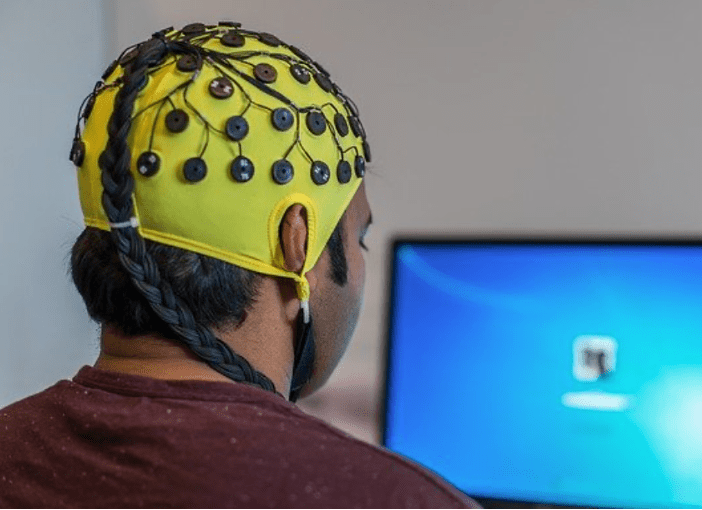Challenge and Background Information
- Some individuals have such severe motor impairments that they have minimal movement.
- These individuals are essentially “locked in”
- Brain-computer interface (BCI) provides a potential means to control a computer using brain waves, but this potential has not been realized.
- BCI use is demanding & slow
- Not highly accurate
- Has not resulted in functional communication
- Limited data on actual use by individuals with significant difficulties
- RERC on AAC (2014-20) developed & evaluated multimodal access
- Used signals from multiple sources to improve accuracy & efficiency of access (e.g., eye gaze & single switch access)
Goals

The goal of this project is to address the access needs of people who are unable to effectively use current alternative access methods, by developing and evaluating a new switch access method (Smart Select) that uses machine learning to combine brain EEG and muscle EMG signals. Smart Select will improve access to AAC technology by supporting the integrated use of more than one input modality to increase accuracy and reliability of access, specifically by combining motor- based EEG with EMG signal activity to bolster the often difficult-to-interpret EEG signals inherent in brain-computer interface (BCI) applications.
Updates
